Lugares de interés (POIs) del Mapa
0: Statue of Osiris
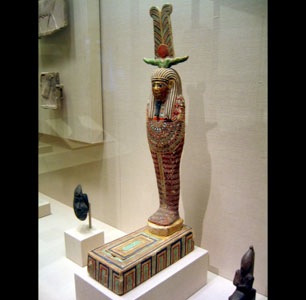
Ancient Art Podcast Episode 4. Explore a real Egyptian Mystery, the Statue of Osiris, complete with trap doors, hollow cavities, fake mummies, and false doorways. (AIC 2002.542)
Más sobre Statue of Osiris
1: A Donkey-headed Rhyton
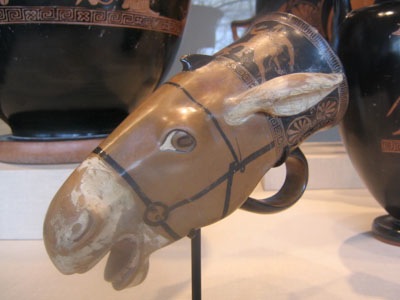
Ancient Art Podcast Episode 3. The history of the Ancient Greek rhyton (drinking cup), from its involvement in heroic warrior feasts and sacrifices to the drinking parties of 5th century B.C. Athens. (AIC 1905.345)
Más sobre A Donkey-headed Rhyton
2: Ellsworth Kelly's Chicago Panels
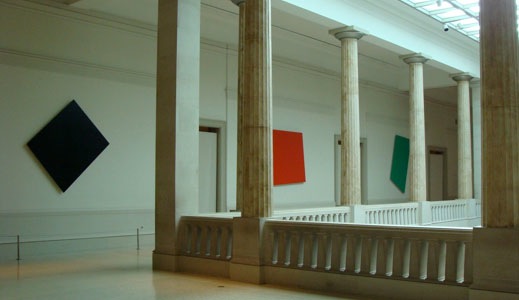
Ancient Art Podcast Episode 13. Ancient and contemporary come together in a poetic embrace in this exploration two monumental works of artistic achievement, “The Chicago Panels” by contemporary American artist Ellsworth Kelly and the Parthenon Frieze from Ancient Greece.
Más sobre Ellsworth Kelly's Chicago Panels
3: Gandharan Bodhisattva

Ancient Art Podcast Episode 7. Head East into Asia to uncover the remnants of Alexander's empire and discover the bridge where East meets West in ancient Gandhara.
Más sobre Gandharan Bodhisattva
4: Cicadas

Ancient Art Podcast Episode 8. Explore the mystery, science, and theatrics of cicadas. Reveal the mystery of these under-appreciated insects and delve into the secret arts and myths of ancient China.
Más sobre Cicadas
5: Mummy Case of Paankhenamun
On display October 31, 2013-July 27, 2014
Ancient Art Podcast Episode 2. Examine the iconography and symbolism throughout the decoration of the Mummy Case of Paankhenamun. See how the ornamentation works together to express a unifying theme paramount in Ancient Egyptian funerary belief. (AIC 1910.238)
Más sobre Mummy Case of Paankhenamun
6: A Corinthian Pyxis
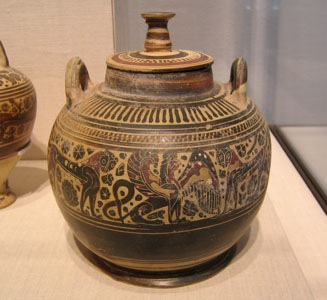
Ancient Art Podcast Episode 5. In this episode we take a look at some Archaic Greek vase painting in a pyxis from the Orientalizing Period at the Art Institute of Chicago. We explore the Ancient Near Eastern influence on developing Greek civilization along with Greece's own interest in their own mythic, heroic past. We also discuss the strategic importance of Corinth in the cultural and commercial climate of the Orientalizing Period, while comparing the newly emerging, but short-lived Corinthian ware of this day and age to the traditional Geometric Period ware of earlier centuries and contemporary neighbors. We check out the emergence of Classical Doric Greek temple architecture in the Temple of Artemis at Corfu and see how its sculptural decor relates to the cultural milieu of Archaic Greece and the arts of the Orientalizing Period. The Art Institute Orientalizing Period pyxis further demonstrates a quintessential synthesis of imported Near Eastern mythology, symbolism, and iconography with the Greece's newfound passion for the iconography and symbolism of their own native, ancient, Bronze Age Mycenaean heroic and mythic ancestry. And on top of all of that, we even manage to tie in the famed Lion's Gate of Ancient Mycenae. (AIC 1905.343a-b)
Más sobre A Corinthian Pyxis
7: The Scarab in Ancient Egypt
See Egyptian scarabs on display October 31, 2013-July 27, 2014
Ancient Art Podcast Episode 1. Examine the role of the scarab beetle in Ancient Egyptian religion and funerary art as both the Egyptian god Khepri and an iconographic motif of resurrection. We also touch on the possible roots of his religious association and take a look at the use of the scarabs in amulets, the “heart scarab.”
Más sobre The Scarab in Ancient Egypt
8: A Classical Lekythos

Ancient Art Podcast Episode 6. One could easily pass by this muted, diminutive, unassuming lekythos at the Art Institute of Chicago, but in this episode we’ll closely examine it’s significant message and place it in the grander scheme of the newly refined aesthetic in late Archaic and Classical Athens. In exploring the narrative strategies of Attic vase painting, we’ll also take a hard look at a particularly exemplary black-figure amphora by the renown vase painter Exekias.
Más sobre A Classical Lekythos
9: Japanese Screens
The works of art featured in this episode are infrequently on display.
Ancient Art Podcast Episode 24. Episode 24 brings us the art of the Japanese folding screen from the exhibition Beyond Golden Clouds: Japanese Screens from the Art Institute of Chicago and the Saint Louis Art Museum. We’ll explore traditional styles, motifs, subjects, and forms, and also discover contemporary examples of the Japanese screen breaking boundaries and redefining the art form. Two works are examined in close detail, Flowering Cherry and Autumn Maples with Poem Slips by Tosa Mitsuoki and Mountain Lake Screen Tachi by Okura Jiro, in a discussion weaving together tradition and innovation, antiquity and contemporary, banal and spiritual. (AIC 1977.156-1977.157 and AIC 2005.173.1-2)
Más sobre Japanese Screens
10: The Parthenon Frieze, Part 1
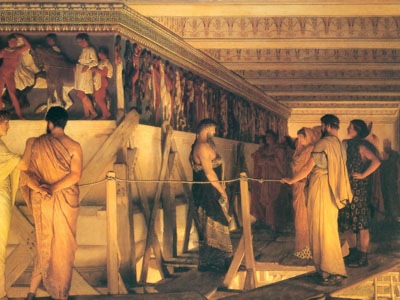
Ancient Art Podcast Episode 10. This is the first of multiple episodes focusing on one of the most iconic, pivotal, and contentious works or art from Ancient Greece: the Parthenon Frieze. We begin with an introduction to the frieze's origin, construction, and sordid history. The meat of our journey brings us to the exploration of the new imperial Athens, who seeks to model herself, her new Periclean Acropolis, and the Parthenon frieze after the closest and most familiar former empire of the Mediterranean, her once-formidable enemy, Persia.
Más sobre The Parthenon Frieze, Part 1
11: The Parthenon Frieze, Part 2
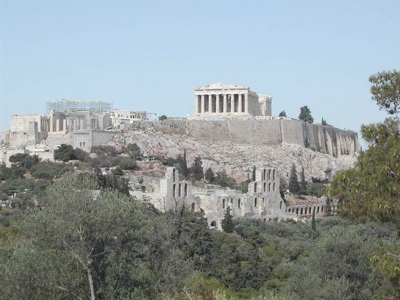
Ancient Art Podcast Episode 11. In the second part of multiple episodes focusing on the Parthenon Frieze and its relationship with the Persian Apadana reliefs at Persepolis, we investigate the evidence for the transmission of ideas from Persia to Greece by way of the Ionian Greek artists, who plied their trade throughout the Mediterranean. We’ll look closely at an important transitional piece, the so-called Harpy Tomb at Xanthos in Lycia, as well as a couple Persian imperial sites, Susa and Persepolis, before turning westward to Athens. We’ll also examine the role of Persian monumental art and architecture and reveal the Greek stylistic influence passed on to Persia by the Ionian artists.
Más sobre The Parthenon Frieze, Part 2
12: The Parthenon Frieze, Part 3

Ancient Art Podcast Episode 12. In the third and final installment of multiple episodes focusing on the Parthenon Frieze and its relationship with the Persian Apadana reliefs at Persepolis, we take a quick look at the history and context of the Ionic frieze, investigating its evolution from a decorative band to storyboard. We'll wrap up with a close examination of the many similarities between the Parthenon Frieze and Apadana reliefs, the Parthenon and Apadana themselves, the Acropolis and Persepolis, and finally Athens and the Persian Empire.
Más sobre The Parthenon Frieze, Part 3
13: Walk::text Like an Egyptian
On display October 31, 2013-July 27, 2014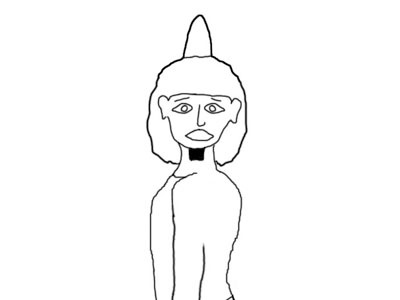
Ancient Art Podcast Episode 9. The ancient riddle of the human form in Egyptian painting is finally answered! But it ain't simple. There's a deeply complex answer to this question involving Egyptian concepts of cosmic world order, philosophy, religion, magic, and even hieroglyphs.
Más sobre Walk::text Like an Egyptian
14: Alsdorf Galleries of Indian, Southeast Asian, Himalayan, and Islamic Art
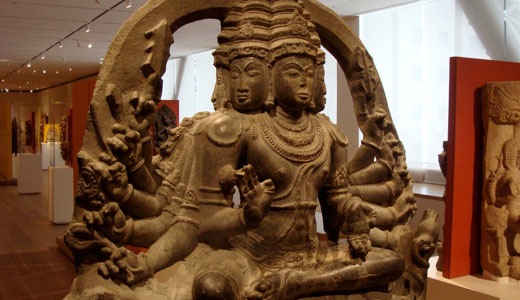
Ancient Art Podcast Episode 17. Explore the Art Institute of Chicago's Galleries of Indian, Southeast Asian, Himalayan, and Islamic Art & closely examine one particularly exemplary work of sculpture, the 12th century Indian statue of the Divine General Kartikeya.
Más sobre Alsdorf Galleries of Indian, Southeast Asian, Himalayan, and Islamic Art
15: Nefertiti, Devonia, Michael
Rarely on display in the Art Institute's 2nd floor Contemporary Galleries
Ancient Art Podcast Episode 22. Another foray into contemporary art, where antiquity and modernity collide. Episode 22 explores two works by contemporary performance and visual artist Lorraine O’Grady: Nefertiti/Devonia Evangeline and Miscegenated Family Album. We delve deep into the family history of Nefertiti and Akhenaten of the Amarna Period. We also explore the idea of race in Ancient Egypt, touching on Afrocentric theories and how our own cultural biases shape the field of Egyptology. Lastly, a short homage to the King of Pop [“ma’a kheru”].
Más sobre Nefertiti, Devonia, Michael
16: Beheaded Beauties

Ancient Art Podcast Episode 25. Discover a few headless and disembodied works of art, including the humorous, the grotesque, and the just plain practical. We compare a Roman statue of a seated woman to its Classical Greek antecedents and explore one very logical explanation for why so many Roman statues are missing their heads and arms.
Más sobre Beheaded Beauties
17: Aphrodite of Knidos
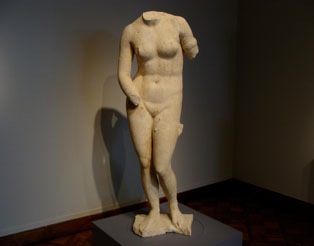
Ancient Art Podcast Episode 26. Explore the history, artistry, and mythology of the famous Hellenistic sculpture, the Aphrodite of Knidos by Praxiteles. Using the words of ancient authors::text like Hesiod, Pliny the Elder, and others, we examine multiple copies of the sculpture, including the Vatican’s Colonna Venus, the Uffizi’s Venus de' Medici, the Aphrodite Braschi of the Munich Glyptothek, and an example from the Art Institute of Chicago. We also expose the misnomer of the Roman “copy” of an original Greek sculpture. And we’ll round things out with some modern revisionist theories on the sexuality of Aphrodite.
Más sobre Aphrodite of Knidos
18: Hiratsuka Un'ichi
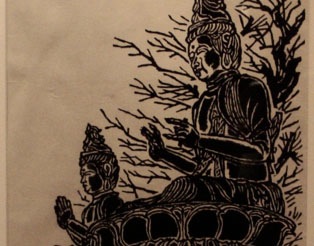
Ancient Art Podcast Episode 27. Though his works are seldom on view, this episode explores the art and life of one of the most influential 20th century Japanese woodblock print artists, Hiratsuka Un'ichi. A pioneer of the early 20th century Japanese Creative Print movement (sosaku hanga), Hiratsuka is steeped in ancient Japanese spiritual and visual traditions, while strongly influenced by the evolving culture of early 20th century Japan. Discover how Hiratsuka Un'ichi broke the rules of the rigidly predefined role of woodblock carver and inspired a new generation of artists.
Más sobre Hiratsuka Un'ichi
19: Avatars of Vishnu

Ancient Art Podcast Episode 28.With all the hype about James Cameron’s latest film, Avatar, episode 28 takes a look at the real story of the avatar as we explore the stories and art of the avatars of the Hindu god Vishnu. We’ll learn about the epic heroes Rama of the Ramayana and Krishna of the Mahabharata, discover the Buddha’s role in Hinduism, and encounter Vishnu’s fierce forms of the boar Varaha and man-lion Narasimha.
Más sobre Avatars of Vishnu
20: Shiva Nataraja, Lord of the Dance
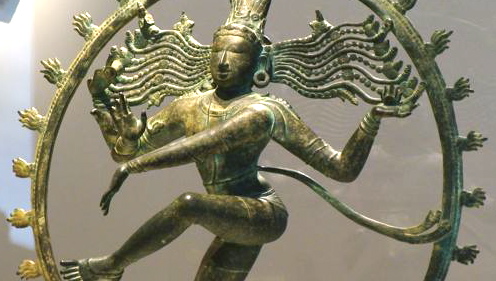
Ancient Art Podcast Episode 31. Take a look at the iconic figure of the Hindu deity Shiva Nataraja, the Lord of the Dance. Explore the timeless concept of the cosmic cycle of creation and destruction. We see a philosophy of balance and harmony expressed through the union of diverging opposites,::text like creation and destruction, male and female, life and death -- and we learn how the imagery, symbolism, and iconography of the popular Nataraja figure embody this philosophy and spiritual belief. Plus we discover Shiva's function as the destroyer of the cosmos, the supreme yogi and cosmic dancer, and father of the beloved elephant-headed deity Ganesha, the Remover of Obstacles.
Más sobre Shiva Nataraja, Lord of the Dance
21: Hadrian and Antinous

Ancient Art Podcast Episode 32. From the 2nd century CE, the larger-than-life marble heads of Hadrian and Antinous exemplify the Hellenistic aesthetics and innovation of the Hadrianic era. We discuss the life and times of this dynamic duo, explore the tragic fate of Antinous with his true-to-life unsolved mystery along the Nile, and discover just how far even a, by all accounts, level-headed grieving emperor is willing to go. To round things out, we'll have a brief glimpse of the history of beards in the Roman world and explore how modern connoisseurship, scholarship, and prejudice will mold and influence our understanding of the ancient world.
Más sobre Hadrian and Antinous
22: Jaharis Galleries of Greek, Roman, and Byzantine Art
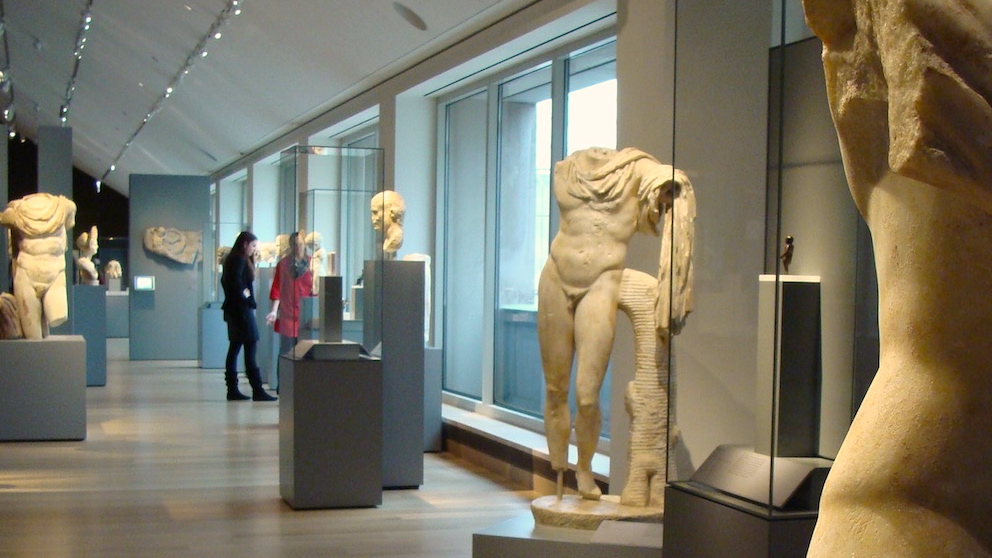
Ancient Art Podcast Episode 55. Jump in for a VIP visit to the Art Institute of Chicago's new Jaharis Galleries of Greek, Roman, and Byzantine Art. Quadruple in size from the museum's earlier ancient art galleries, the new vista boasts a massive display of 550 ancient treasures from the Art Institute and collections around the world, including the British Museum, Getty Villa, Oriental Institute, Field Museum, and more. In this episode, we explore the aesthetics and merits of the new gallery design, point out some pitfalls, see old friends in a new light, and get close and personal with a few new kids on the block. We also explore the Art Institute's new interactive multimedia iPad app, LaunchPad.
Más sobre Jaharis Galleries of Greek, Roman, and Byzantine Art
23: Courtesans and Fish Plates

Ancient Art Podcast Episode 45. Pardon me sir, but do you have any garum? Slurp up a puddle of fermented fish guts with the Ancient Art Podcast! Episode 45 explores the decorative delights, culinary curiosities, and amorous affections of the ancient Greek world. While it packs a punch as an interesting cultural anomaly, the fish plate is an often-overlooked curiosity in the lineup of ancient Greece ceramics. In the 4th century BC, the ancient Greek appetite for fish blossomed as a culture phenomenon, an art form, and a borderline-clinical obsession, rich with sexual innuendos, double-meanings, and salacious undertones. While the fish plate remains somewhat subdued in the otherwise bawdy company at this episode's dinner table, it's always the quiet ones, who hide the secrets. What was the fish plate all about, after all?
Más sobre Courtesans and Fish Plates
24: Ganesha
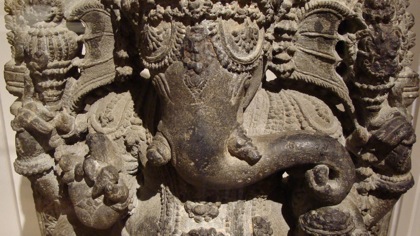
Ancient Art Podcast Episode 33. While the sculpture of Ganesha featured in this episode may not be on display, there are plenty more to go around. In this episode of the Ancient Art Podcast we learn all about the beloved elephant-headed Hindu deity Ganesha. We explore the annual festival celebrating his birth, Ganesha Chaturthi, and discover how he happened to get that elephant head. Plus we investigate why, oh, why he’s missing a tusk! We look closely at a few magnificent sculptures of Ganesha at the Art Institute of Chicago and conclude with an exploration of the contemporary art installation Public Notice 3 by Jitish Kallat on view through January 2, 2011, which juxtaposes Swami Vivekananda’s September 11, 1893 speech in Chicago on religious tolerance with the terror attacks of September 11, 2001.
Más sobre Ganesha